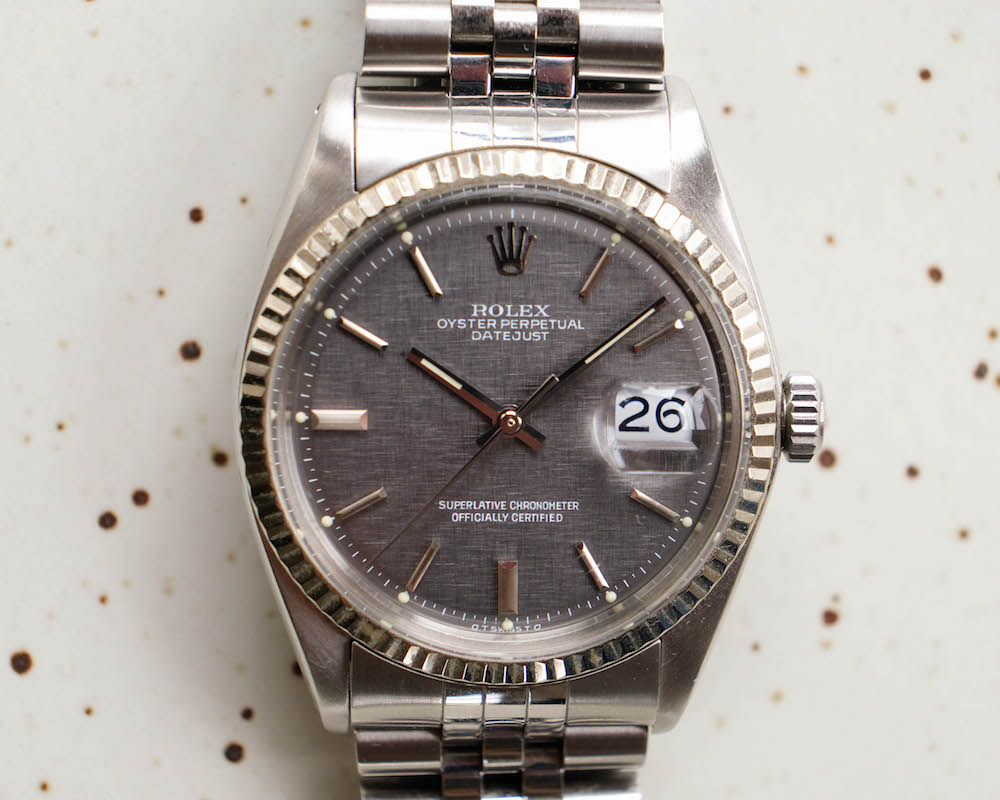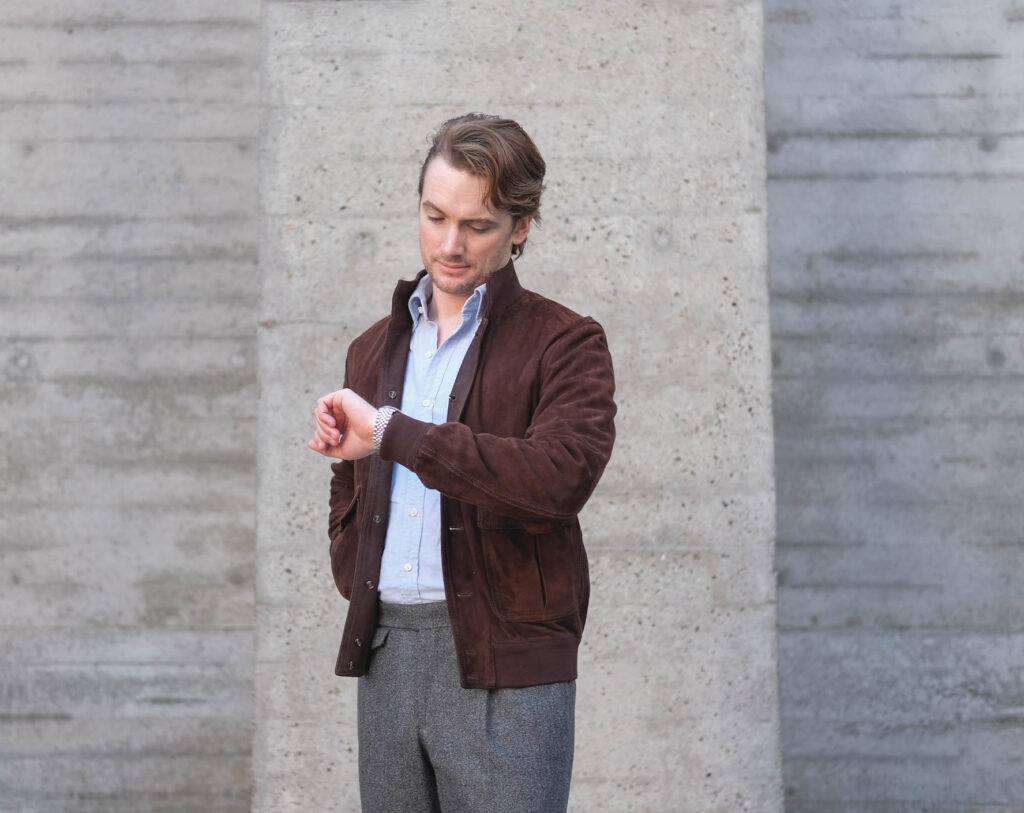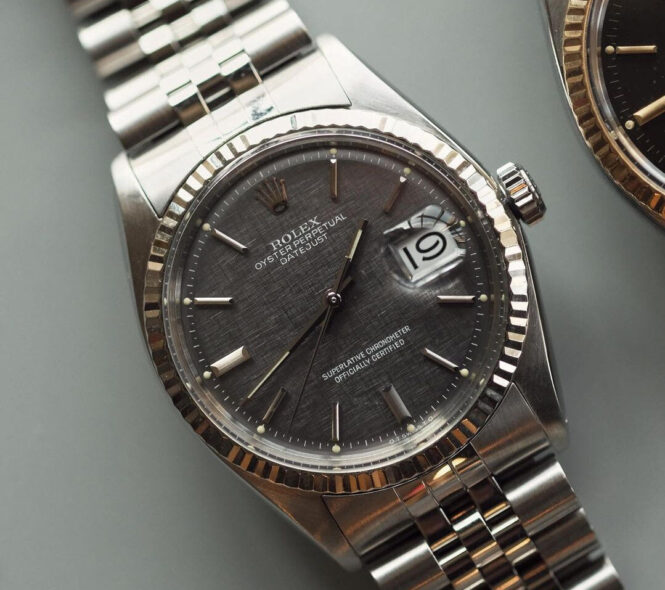Sometimes finding the right product is all about research, learning about the competitive landscape, and how to buy the right thing for your lifestyle. Other times it’s about reading reviews and learning how to play the sales game to get the best price. And then there are times when it’s a chaotic, all-consuming hunt that begins to eclipse the product itself and makes you begin to doubt if you’re even worthy of buying it. This is my story about the latter, and my guide on how to navigate the wild world of vintage watches.
Like many menswear-inclined folks, I have developed what can best be described as a somewhat “risky” interest in watches over the past ten years. I am fortunate that I have mostly been able to keep my interest at arm’s reach, finding myself usually sustained by a distanced appreciation rather than a wallet-destroying purchase. But I still had my “grail list,” with a spread of watches that spanned from viable (like a Junghans Max Bill) to “butt-clenchingly expensive” (like my dream watch, a Rolex R-serial 1016). And while I was able to maintain this distanced appreciation for quite some time, I had also reached a point in my life where I (dangerously) began to think to myself – “You know what? I think I’ve earned a nice watch.” This article serves as a guide for others that may be in the same phase of precarious thinking and also chronicles my own experience going down the rabbit hole of vintage watches.
Beginning the Hunt – Know Your Target
There are thousands of exciting vintage and preowned watch models out there that would be worthy of a good hunt. What will fit best for you is very dependent on your lifestyle, aesthetic style, and certainly on your budget. I had several ideas of what my target piece might be, but kept coming back to vintage Rolexes. The designs are iconic, the brand is legendary, and each model has a rich history. There are many other great brands out there but I decided to apply my “Buy Once, Cry Once” philosophy here and get one excellent watch instead of a couple of nice watches.
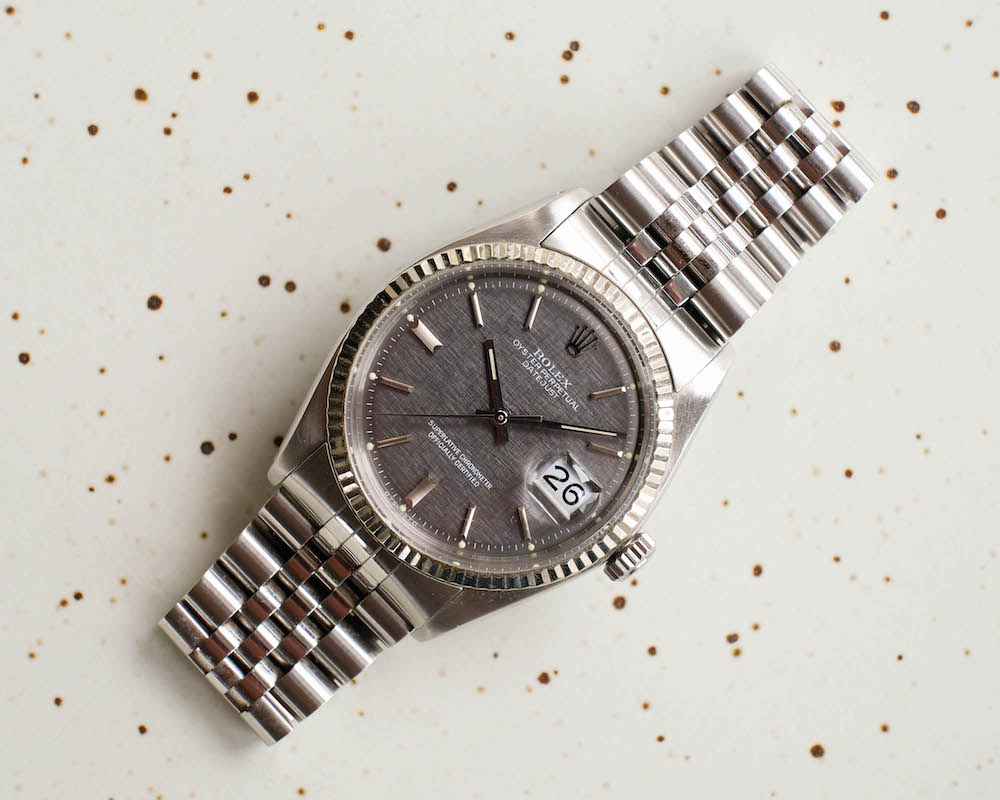
Ultimately, I decided on a Rolex Datejust for a few reasons. First, the aesthetic fits that middle ground of “kinda dressy but not overly so” that I have basically built my whole brand around. It’s versatile style that can span across a wide variety of clothing, which is good because I’ll never be in a place where I have a Rolex to match with each pair of shoes. Secondly, the Datejust comes in a seemly endless array of styles, making it easier to find something unique and catered to my own tastes.
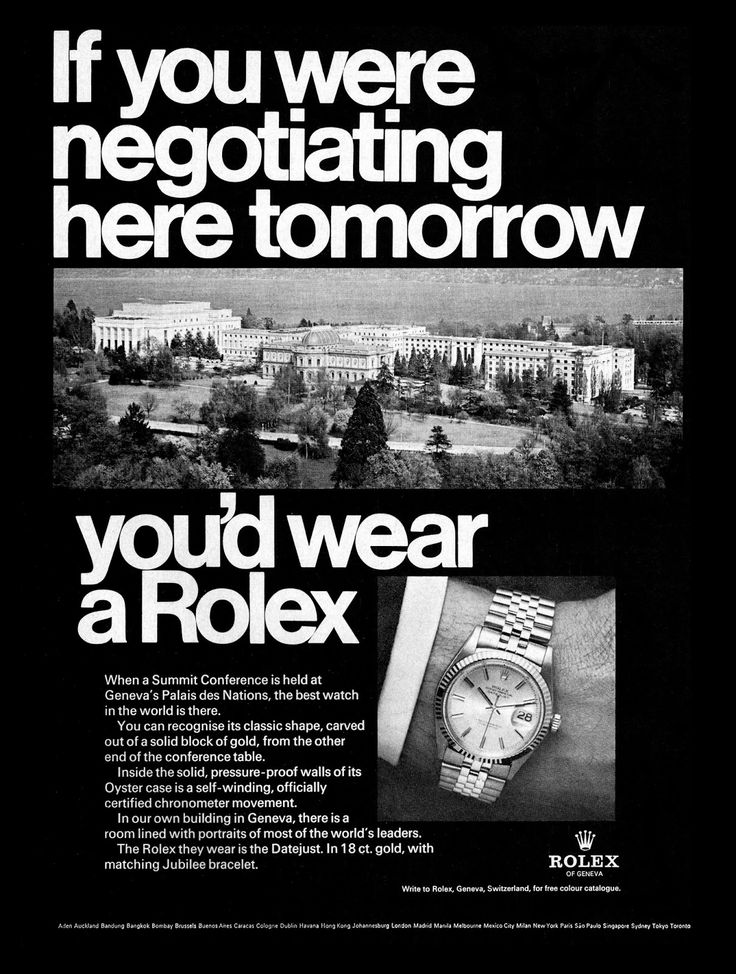
Lastly – and perhaps most importantly – is that the Datejust tends to be in the caboose end of the Vintage Rolex Train, as far as pricing goes. There has been a meteoric rise in prices over the past few years – especially in the past three, though things have started to soften up – and many models have since gone from “maybe someday” to “get over it and move on” pricing. Datejusts have seen increases in price, but they still lag well behind all the classic sport models. So like it or not, a Datejust was probably my only viable Rolex option anyway. Fortunately, it was also a good aesthetic fit for what I was looking for.
From there, I had to figure out the smaller things that differ within each model. There will be variations within every style that was produced for a long time, but the Datejust has a particularly large breadth of options in dial, bezel, hour markers, and much more. Here are some of the decisions I made to whittle down the options:
- Pie-pan dial. This dial shape adds vintage charm, a more three-dimensional look, and sets it clearly apart from its successors, which have flat dials. This meant that I was going for a 4-digit reference rather than a 5-digit (i.e. 1601 vs 16014); I would be sacrificing some technical updates (like a quickset date) and would be looking at older watches, but unlike with Submariners the 4-digit Datejusts are generally cheaper than the more modern 5-digits.
- Fluted bezel. This meant that I wanted the 1601 rather than the engine-turned bezel of the 1603. I much prefer the look of the fluted bezel, which also happens to be in white gold. The pricing seems pretty close with these, so this was a purely aesthetic decision.
- Linen dial. A small subset of Datejusts are given this textured dial, which adds another dimension of complexity to the watch. While not exactly “rare,” linen dials are uncommon and generally come at a premium, but I felt that it was worth it to get such a cool-looking design. Note that linen dials come in two main variants: the more common silver linen and the much rarer gray linen (which can come with white or black text).
- Open 6/9. This is where we really start to get in the weeds. Rolex date rings have had varied fonts over the years, and sometimes they feature “open” sixes and nines, where there’s a bit of empty space at the edge of the number (like you can see in the top image). This is something that I could have gone a lifetime without noticing, but once pointed out I immediately knew which I preferred.
- Sigma dial. Not to be confused with the ultra-rare Ligma dial, a Sigma dial was used by Rolex and other Swiss brands in the early 1970s to denote that solid gold components were used (more info here). It’s a very small detail as parts like the bezel and hands are white gold whether marked sigma or not, but it’s one of those tiny details that give some extra pizazz that only a few people on the internet will appreciate.
- Jubilee bracelet. This is the classic bracelet for the Datejust, and I wanted to make sure it was included. There are varying models over the years (the main ones being the 6251H and the updated 62510H) but I wanted to make sure mine included a decent one so that I didn’t have to start a whole other hunt just to find a bracelet to match it.
All of this added up meant that I was looking for something very specific with not a lot of flexibility. Factoring in requirements around condition and budget meant that I was signing up for a potentially impossible task. It was with this heavy burden that I ventured forth, deep into the recesses of the internet watch world. Since I can only assume that some of you are on that same journey as we speak, here are some of the tactics that I used to scour the internet.
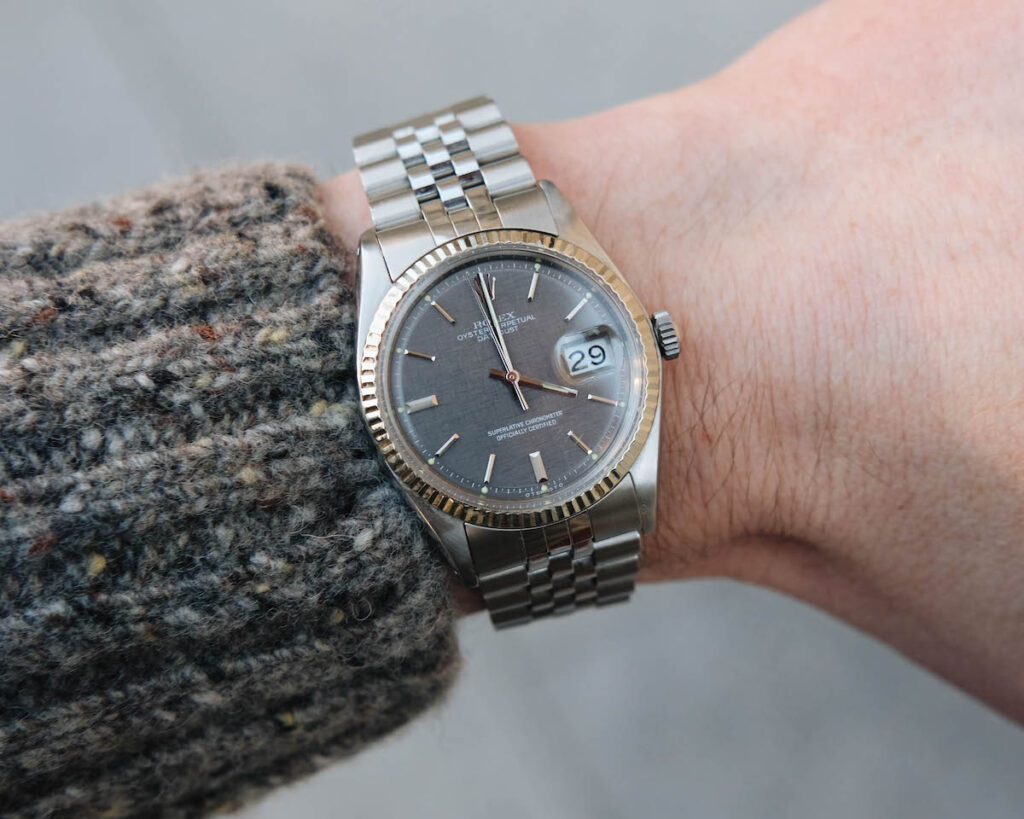
How to Hunt for Vintage Rolexes
Step 1: Know what you’re hunting for. To properly track your prey you must understand exactly what you are looking for, as I outlined above with my ideal watch. Know your non-negotiables, your nice-to-haves, and your budget. Stick to them and don’t consider things that don’t meet your criteria. In my time searching I found many watches that were ok but not great – I’m glad that I didn’t grab a beat-up piece or a slightly different model to save a few bucks or a few months of hunting. Additionally, it’s important know all the possible variants for your watch. Model number is important but often not enough to fully describe the exact piece.
Step 2: Survey the landscape and review options daily. There are hundreds of places where you can purchase a vintage Rolex – some more reputable than others – and it would be impossible to list them all here. With that said, these are the sites that I found most useful:
- WatchRecon. This aggregation tool helps pull listings from all the major forums – Rolex Forum, r/watchexchange, and so forth. Trying to stay on top of forum posts is a huge pain, so this tool is essential for finding the more local-to-local dealings. Many small dealers will also cross-post their listings on these forums.
- Google Image Search. I found this useful for spotting products that were outside of the main resale platforms. I had queries for certain phrases like “rolex 1601 linen” that I filtered to only show new images from that day. I then proceeded to refresh every morning for months on end.
- Chrono24 – but not like you’d think. Chrono24 is a huge marketplace, but I also found it to be very expensive. Because marketplaces like these have hefty fees (usually in the ~7% range), sellers will generally be listing watches at much higher prices than if you were to purchase from them directly. If you find a watch you like on Chrono24, see if the vendor’s username is connected with any websites or social media accounts (the vendor info is buried at the bottom of the product page, on the left). If that doesn’t work, use some reverse image searching to see if it comes up anywhere else. Sellers will often have their own sales channel and would be more than happy to go direct for a lower price instead of paying the big Chrono24 fee. Note that this all also applies to Ebay, but I didn’t spend a lot of time there as the watches I saw seemed more questionable.
- Instagram. Many small-time and up-and-coming dealers use Instagram as their main method of reaching customers. Here are just a few dealers that I like, both big and small:
- 25Dials – spoiler alert, this is where mine came from. More info below.
- Fog City Vintage
- Greyandpatina
- Watchand
- Mvvwatches
- Angelcitytime
- Horologyhour
- Crown_in_oyster_case
- HQMilton
Step 3: Pounce.
Pre-owned watches can move very quickly when the price is right, especially with models and variations that don’t show up frequently. When I found a watch that met all my criteria I bought it within the hour it was posted. The result is what you see here – a Rolex 1601 Datejust from 1973, with a dark gray linen Sigma dial. I bought this one from 25Dials, a relatively new but quickly growing vintage dealer that happened to have exactly what I was looking for. David Kim, the owner, takes excellent photos and thoroughly describes all his watches, and these two factors allowed me to make a decision quickly. The transaction was smooth and a couple days later I found myself in possession of my first vintage Rolex. The journey was over…until I start hunting for something else, at least.
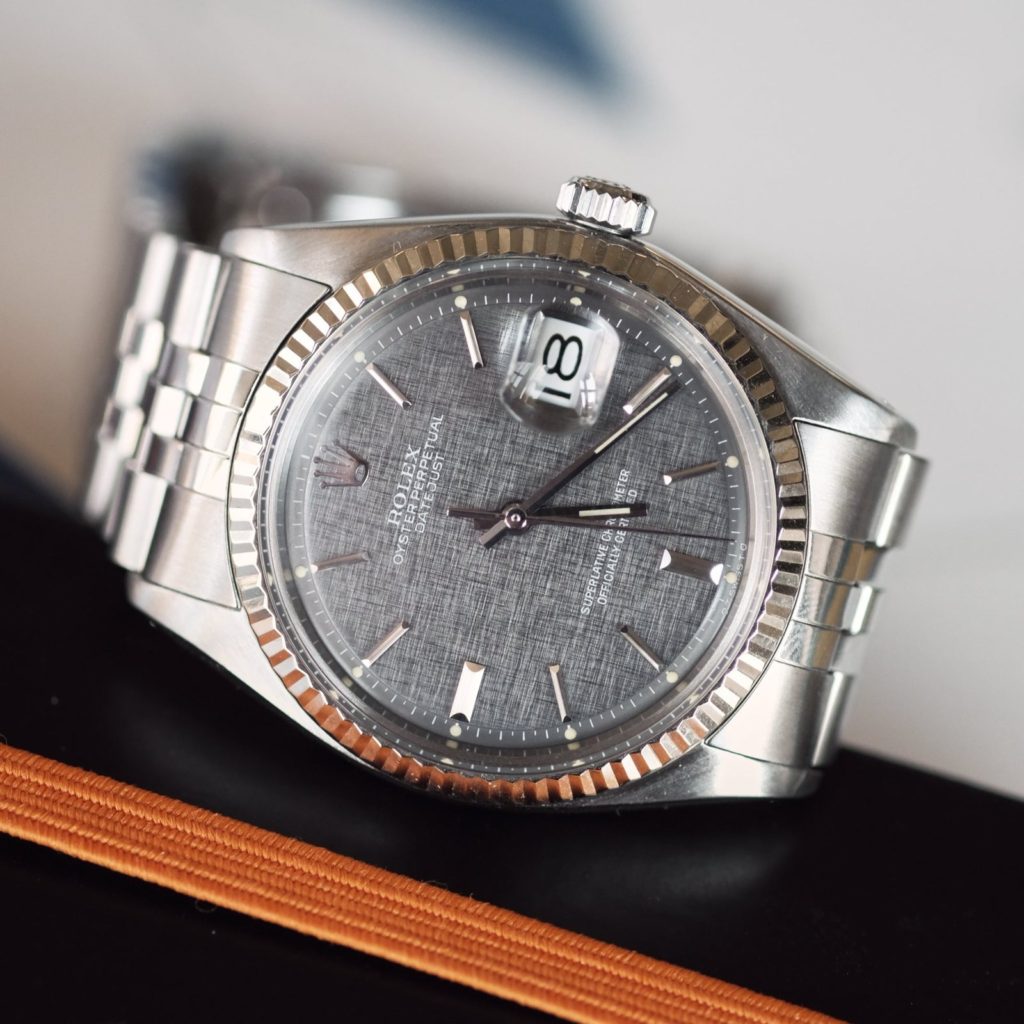
After the Sale – the Honeymoon Phase
All told, my hunt for a Datejust lasted multiple years, starting with curious research and ultimately culminating in franticly refreshing Google image searches on an hourly basis. It was about a year between “I am ready to make this purchase when I find the right one” to actually finding the right one, but in that year I learned more about the world of vintage watches than I ever thought I would. From the outside, the idea of sending thousands of dollars to a stranger in exchange for something that is older than you are is a bit terrifying, but after so much time navigating this space and talking with sellers I feel much more comfortable taking a project like this on.
Hunting for a Rolex reminded me a bit of hunting for wild mushrooms, another esoteric hobby of mine; both involved years of preparation and learning, some disappointment and missed opportunities, scouring the internet to find the right places to look, and then the rush of exhilaration when finding what you came for. The discovery and learning that happens along the way is as much a part of the process as the end product is. For me, this watch is more than just a luxury product – it’s also the physical proof of a long adventure that I went on just because I wanted to learn more about something that was interesting to me. And after all, maybe the real luxury was all the things I learned along the way.
Some images via 25Dials, a great seller.
